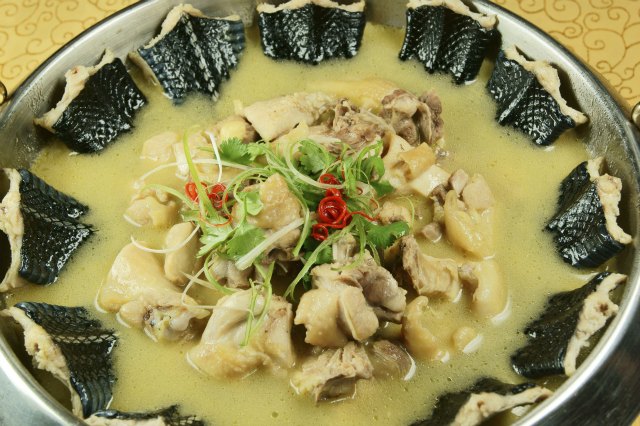Filtered By: Newstv
NewsTV
Three snake recipes you have to try
Since the Garden of Eden, no other animal has a worse reputation among humans than the snake. It's not as if snakes do themselves any favors, either. They look cold and inhuman. Many times they're lethal, too. But you know what else they are? Delicious.
For their first series of episodes abroad, GMA News TV's "Best Men" sent host Jace Flores to sample the stranger side of Chinese cuisine. While herbal tea and octopus tentacles feel closer to home for Filipinos, eating a dangerous animal like a snake provided a surreal experience for Flores and "Best Men" viewers alike.
Snake meat, however, is not a modern food fad or craze. In simpler times, people lived off the land and ate whatever meat they could find. Before man learned to domesticate livestock, snake was a common source of protein for people around the world, satisfying their carnivorous cravings. But in some parts of the world, the tradition has endured.
In all preparations, of course, you have to make sure that the snake is dead and the meat unspoiled. Only the snake's body is eaten; the heads are removed because poisonous varieties, including different types of cobras, store their venom in sacs found in the head. The snake is skinned much like a fruit, though a bit of pressure when pulling should do the trick. Then its underside is slit to remove its internal organs, and the meat is rolled away from the spine.
So if you can, shed off your squeamishness and wrap your tastebuds around these three exotic recipes. 

Chinese snake soup
Snake soup is most popular in Canton, a city in southern China. But the highest demand for the dish comes from its more globalized neighbor, Hong Kong. In Chinese tradition, consuming snake soup has spiritual and medicinal properties ranging from curing malaria, easing joint pains, and even warding off evil spirits. It's especially popular during winter when it's believed that snake soup wards off illnesses brought about by cold winds.
The exact recipe varies depending on what you're trying to cure, but the broth contains chicken, abalone, mushrooms, pork, ginger, and of course, snake meat. Chrysanthemum leaves are sprinkled on top to add some sweetness. It produces a spicy dish with a subtly herbal taste.
Breaded snake strips
This dish used to be a frontiersman's meal in the southwestern portions of the United States. The snake meat is soaked overnight in saltwater to remove the blood and some of its tough texture. The meat is dipped in egg whites and rolled through a mixture of cornmeal and black pepper, then fried in hot oil until golden brown.
Unlike chicken or fish strips, snake pieces don't have a lot of meat to glean from the bones. You have to rake your teeth over the ribs to get most of the flesh. Usually they're eaten with anything you'd serve with fried food, like a side of corn or chopped vegetables.
Stir-fried snake
Stir-frying this reptile is the second most popular way to serve a snake in China. The snake meat is soaked in wine and vinegar for about an hour and set aside. Glass noodles and wanton pieces are fried separately in oil.
Next, garlic and ginger are fried as well. A mix of celery, peppers, daikon, and tangerine peels are added, followed by the snake-wine mixture. Stir for about three minutes, then add glass noodles to the mix. When done, the snake dish is topped with fried wanton pieces to give some variety to its flavor and texture. — Job de Leon/CM, GMA News
Tags: webexclusive, recipes
More Videos
Most Popular



